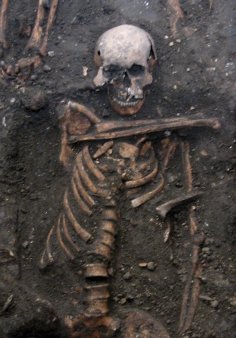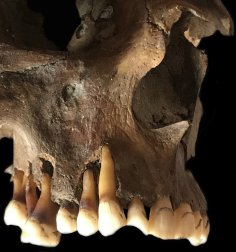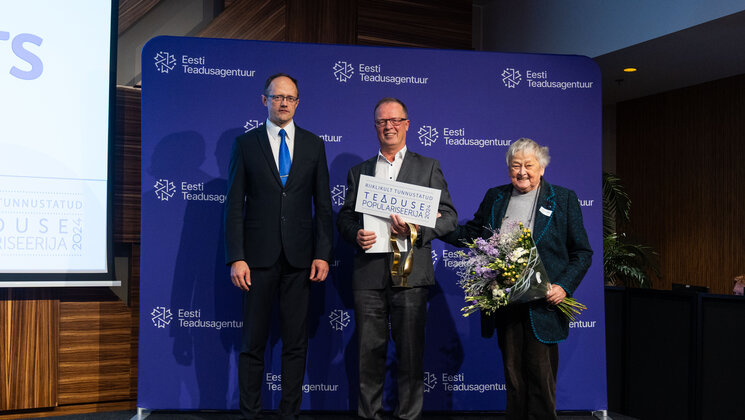Ancient DNA analysis revealed prehistoric herpes virus the spread of which can be linked to kissing
The first ancient genomes to be sequenced from the virus behind cold sores suggest that modern strains of herpes started to go global in the Bronze Age. This can be linked to migrations into Europe and possibly also the emergence of kissing.

Ancient genomes from the herpes virus that commonly causes cold sores have been uncovered and sequenced for the first time in cooperation of researchers from the University of Tartu and the University of Cambridge. This virus currently infects some 3.7 billion people globally.
Latest research suggests that the HSV-1 virus strain behind facial herpes as we know it today arose around five thousand years ago, in the wake of vast Bronze Age migrations into Europe from the steppe grasslands of Eurasia. The associated population boom drove rates of transmission.
The authors of the study, published in the journal Science Advances, say the Bronze Age flourishing of facial herpes may have coincided with the advent of a new cultural practice imported from the east: sexual-romantic kissing.
“Facial herpes hides in its host for life and only transmits through oral contact, so mutations occur slowly over centuries and millennia. We need to do deep-time investigations to understand how DNA viruses like this evolve,” said co-senior author Dr Charlotte Houldcroft from the University of Cambridge.
Previously, genetic data for herpes only went back to 1925. Now, the team managed to hunt down herpes in the remains of four individuals who had died in a period stretching over a thousand years, and extract viral DNA from the roots of teeth. Herpes often flares up with mouth infections: at least two of the ancient people studied had gum disease, and the third smoked tobacco.
The oldest sample came from an adult male excavated in Russia’s Ural Mountains, dating from the late Iron Age around 1,500 years ago. Two samples were from Cambridge (UK): one a female dating from 6–7th centuries CE, the other a young adult male from the late 14th century, who had suffered appalling dental abscesses. The final sample came from a young adult male excavated in Holland: a fervent clay pipe smoker, most likely massacred by a French attack on his village by the banks of the Rhine in 1672.

“We screened ancient DNA samples from around 3,000 archaeological finds and got just four herpes hits,” said co-lead author Dr Meriam Guellil from the University of Tartu Institute of Genomics. “By comparing ancient DNA with herpes samples from the 20th century, we were able to analyse the differences and estimate a mutation rate, and consequently a timeline for virus evolution,” said co-lead author Dr Lucy van Dorp from the UCL Genetics Institute.
“Every primate species has a form of herpes, so we assume it has been with us since our own species left Africa. However, something happened around five thousand years ago that allowed one strain of herpes to overtake all others. This was possibly an increase in transmissions, which could have been linked to kissing”, said co-senior author Dr Christiana Scheib from the University of Tartu Institute of Genomics and the University of Cambridge.
Researchers point out that the earliest known record of kissing is a Bronze Age manuscript from South Asia, and suggest the custom – far from universal in human cultures – may have travelled westward with migrations into Europe from Eurasia.
Centuries later, the Roman Emperor Tiberius tried to ban kissing at official functions to prevent disease spread. This decree may have been herpes-related. However, for most of human prehistory, HSV-1 transmission would have been “vertical”: the same strain passing from infected mother to newborn child.
Genomes reconstructed from archaeological material give us a unique opportunity to study the origin and evolution of DNA viruses. In addition to herpes viruses, these include the monkeypox virus, the outbreak of which has just been declared a public health emergency of international concern by the World Health Organisation. The study of ancient genomes makes it possible to determine and date evolutionary events much more accurately than laboratory experiments or models based on modern genomes. This, in turn, helps to understand how viruses have influenced human development.
According to the World Health Organisation, as much as two thirds of the global population under the age of 50 now carry HSV-1. For most of us, the occasional cold sores that result are uncomfortable, but in combination with other ailments – sepsis or even COVID-19, for example – the virus can be fatal. In 2018, two women died of HSV-1 infection in the UK following caesarean births.
“Genomes reconstructed from archaeological material give us a unique opportunity to study the origin and evolution of DNA viruses. In addition to herpes viruses, these include the monkeypox virus, the outbreak of which has just been declared a public health emergency of international concern by the World Health Organisation. The study of ancient genomes makes it possible to determine and date evolutionary events much more accurately than laboratory experiments or models based on modern genomes. This, in turn, helps to understand how viruses have influenced human development”, said Guellil.



